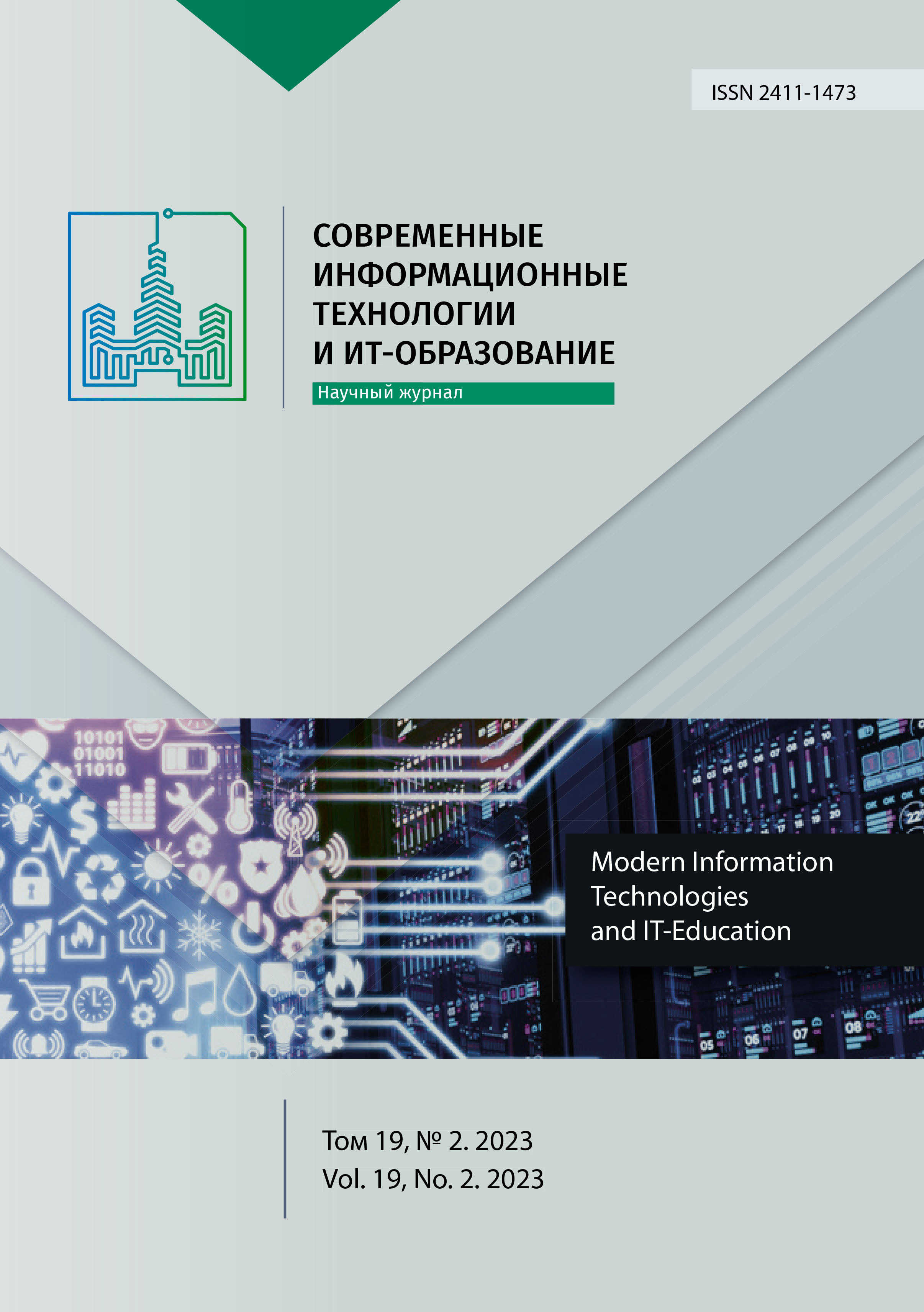Моделирование конкуренции языков
Аннотация
В статье рассмотрены различные модели языковой динамики и гипотезы их построения. Рассмотрены результаты наложения уже имеющихся моделей на реальные статистические данные и результаты их описания. Строится новая модель, описывающая поведение языко-вой динамики с учётом новых гипотез. При построении новой модели учтены гипотезы су-ществующих моделей, а также добавлены новые гипотезы. В частности, добавлена гипотеза о том, что первоначально, в естественных условиях, дети осваивают только один язык, а за-тем второй, даже если живут в двуязычной среде. Выполнено аналитическое исследование новой модели, определены качественно различные динамические режимы: один язык вы-тесняет второй, два языка сосуществуют с билингвами. Определены состояния равновесия, которые характеризуются полным отсутствием одного из языков, наличием двух языков с билингвами. Проведена идентификация коэффициентов модели с учётом реальных стати-стических данных по языковым парам: уэльско-английская, гэльско-английская, франко-голландская, баскско-испанская, каталоно-испанская, франко-английская. В процессе чис-ленного счёта была обнаружена зависимость коэффициентов модели от времени и применён метод моделирования для нескольких временных периодов. Проведено сравнение коэффи-циентов модели для языковых пар города и периферии, спрогнозирована дальнейшая дина-мика и определён её характер. Отмечена устойчивая динамика для искусственно поддержи-ваемых языковых пар.
Литература
2. Boissonneault M., Vogt P. A systematic and interdisciplinary review of mathematical models of language competition. Humanities and Social Sciences Communications. 2021;8:21. https://doi.org/10.1057/s41599-020-00683-9
3. Ammosov D.A., Grigorev A.V., Stepanov S.P., Malysheva N.V., Zamorshchikova L.S. Numerical simulation of language interactions using online coupled Generalized Multiscale Finite Element Method. Journal of Computational and Applied Mathematics. 2023;423:114962. https://doi.org/10.1016/j.cam.2022.114962
4. Feltgen Q., Fagard B., Nadal J.P. Modeling Language Change: The Pitfall of Grammaticalization. In: La Mantia F., Licata I., Perconti P. (eds.) Language in Complexity. Lecture Notes in Morphogenesis. Cham: Springer; 2017. p. 49-72. https://doi.org/10.1007/978-3-319-29483-4_3
5. Abrams D., Strogatz S. Modelling the dynamics of language death. Nature. 2003;424:900. https://doi.org/10.1038/424900a
6. Ba I., Ndiaye P., Ndao M., Diakhaby A. An Extension of Two Species Lotka Volterra Competition Model. Biomath Communications. 2021;8(2):211217. https://doi.org/10.11145/bmc.2021.12.171
7. Castell X., Egu luz V., San Miguel M. Ordering dynamics with two non-excluding options: bilingualism in language competition. New Journal of Physics. 2006;8(12):308. https://doi.org/10.1088/1367-2630/8/12/308
8. Mira J., Paredes A. Interlinguistic similarity and language death dynamics. Europhysics letters. 2005;69(6):1031. https://doi.org/10.1209/epl/i2004-10438-4
9. Baggs I., Freedman H. A mathematical model for the dynamics of interactions between a unilingual and a bilingual population: persistence versus extinction. The Journal of Mathematical Sociology. 1990;16(1):51-75. https://doi.org/10.1080/0022250X.1990.9990078
10. Baggs I., Freedman H. Can the speakers of a dominated language survive as unilinguals?: a mathematical model of bilingualism. Mathematical and Computer Modelling. 1993;18(6):9-18. https://doi.org/10.1016/0895-7177(93)90122-F
11. Wyburn J., Hayward J. The future of bilingualism: an application of the Baggs and Freedman model. The Journal of Mathematical Sociology. 2008;32(4):267-284. https://doi.org/10.1080/00222500802352634
12. Díaz M., Switkes J. Speaking out: A mathematical model of language preservation. Heliyon. 2021;7(5): e06975. https://doi.org/10.1016%2Fj.heliyon.2021.e06975
13. Cantone K.F., Müller N. Codeswitching at the interface of language-specific lexicons and the computational system. International Journal of Bilingualism. 2005;9(2):205-225. https://doi.org/10.1177/13670069050090020501
14. Ringblom N. An introduction to bilingual development. International Journal of Bilingual Education and Bilingualism. 2010;13(6):749-751. https://doi.org/10.1080/13670051003593386
15. Kennison S.M. Introduction to Language Development. SAGE Publications, Ltd; 2014. 496 p. https://doi.org/10.4135/9781506374499
16. Taeschner T. The Sun is Feminine: A Study on Language Acquisition in Bilingual Children. Springer Series in Language and Communication. Vol. 13. Springer Berlin, Heidelberg; 1983. 248 p. https://doi.org/10.1007/978-3-642-48329-5
17. Paradowski M., Bator A. Perceived effectiveness of language acquisition in the process of multilingual upbringing by parents of different nationalities. International Journal of Bilingual Education and Bilingualism. 2016;21(6):647-665. https://doi.org/10.1080/13670050.2016.1203858
18. Bialystok E. Cognitive Effects of Bilingualism: How Linguistic Experience Leads to Cognitive Change. International Journal of Bilingual Education and Bilingualism. 2007;10(3):210-223. https://doi.org/10.2167/beb441.0
19. Stafford C.A. Bilingualism and enhanced attention in early adulthood. International Journal of Bilingual Education and Bilingualism. 2011;14(1):1-22. https://doi.org/10.1080/13670050903568209
20. Louf T., Sánchez D., Ramasco J.J. Capturing the diversity of multilingual societies. Physical Review Research. 2021;3:043146. https://doi.org/10.1103/PhysRevResearch.3.043146
21. Alexandrova N.S., Antonets V.A., Kuzenkov O.A., Nuidel I.V., Shemagina O.V., Yakhno V.G. Bilingualism as an Unstable State. In: Velichkovsky B.M., Balaban P.M., Ushakov V.L. (eds.) Advances in Cognitive Research, Artificial Intelligence and Neuroinformatics. Intercognsci 2020. Advances in Intelligent Systems and Computing. Vol. 1358. Cham: Springer; 2021. p. 359-367. https://doi.org/10.1007/978-3-030-71637-0_41
22. Morozov A., Kuzenkov O. Towards the construction of a mathematically rigorous frame-work for the modelling of evolutionary fitness. Bulletin of Mathematical Biology. 2019;81:4675-4700. https://doi.org/10.1007/s11538-019-00602-3
23. Sutantawibul C., Xiao P., Richie S., Fuentes-Rivero D. Revisit Language Modeling Competition and Extinction: A Data-Driven Validation. Journal of Applied Mathematics and Physics. 2018;6(7):1558-1570. https://doi.org/10.4236/jamp.2018.67132[ 1]
24. Zhang M., Gong T., Principles of parametric estimation in modeling language competition. Proceedings of the National Academy of Sciences. 2013;110(24):9698-9703. https://doi.org/10.1073/pnas.1303108110
25. Scialla S., Liivand J.-K., Patriarca M., Heinsalu E. A three-state language competition model including language learning and attrition. Frontiers in Complex Systems. 2023;1:1266733. https://doi.org/10.3389/fcpxs.2023.1266733

Это произведение доступно по лицензии Creative Commons «Attribution» («Атрибуция») 4.0 Всемирная.
Редакционная политика журнала основывается на традиционных этических принципах российской научной периодики и строится с учетом этических норм работы редакторов и издателей, закрепленных в Кодексе поведения и руководящих принципах наилучшей практики для редактора журнала (Code of Conduct and Best Practice Guidelines for Journal Editors) и Кодексе поведения для издателя журнала (Code of Conduct for Journal Publishers), разработанных Комитетом по публикационной этике - Committee on Publication Ethics (COPE). В процессе издательской деятельности редколлегия журнала руководствуется международными правилами охраны авторского права, нормами действующего законодательства РФ, международными издательскими стандартами и обязательной ссылке на первоисточник.
Журнал позволяет авторам сохранять авторское право без ограничений. Журнал позволяет авторам сохранить права на публикацию без ограничений.
Издательская политика в области авторского права и архивирования определяются «зеленым цветом» в базе данных SHERPA/RoMEO.
Все статьи распространяются на условиях лицензии Creative Commons «Attribution» («Атрибуция») 4.0 Всемирная, которая позволяет другим использовать, распространять, дополнять эту работу с обязательной ссылкой на оригинальную работу и публикацию в этом журналe.













